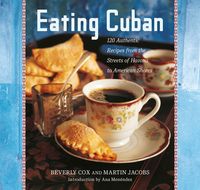Advertisement
Yuca, Cassava, or Manioc
By Beverly Cox and Martin Jacobs
Published 2006
A root vegetable that has been a Cuban staple since pre-Columbian times. There are two basic varieties, bitter and sweet. The bitter variety contains a high level of prussic acid and is toxic if not properly prepared. First it must be completely peeled, then the white flesh grated and all of the juices pressed out. Cuba’s original Native American inhabitants dipped the points of their arrows in this poisonous liquid. The detoxified flesh is then pounded and made into an unleavened crackerlike bread called casabe. Sweet yuca, the kind sold fresh in supermarket produce departments, should also be carefully peeled to remove both the outer brown peel and pink underpeel. The white flesh is boiled before eating. Sweet yuca has a texture and flavor similar to those of a potato. It can be boiled, added to soups, made into fritters or croquettes, or fried as chips or in chunks. In Cuba, boiled yuca is often served with mojo sauce.



